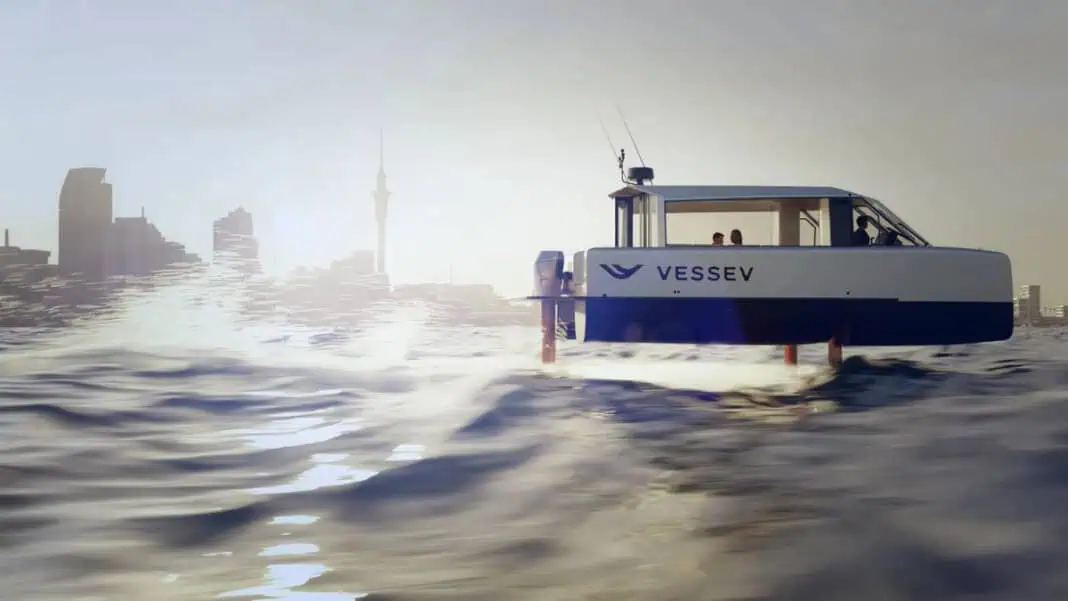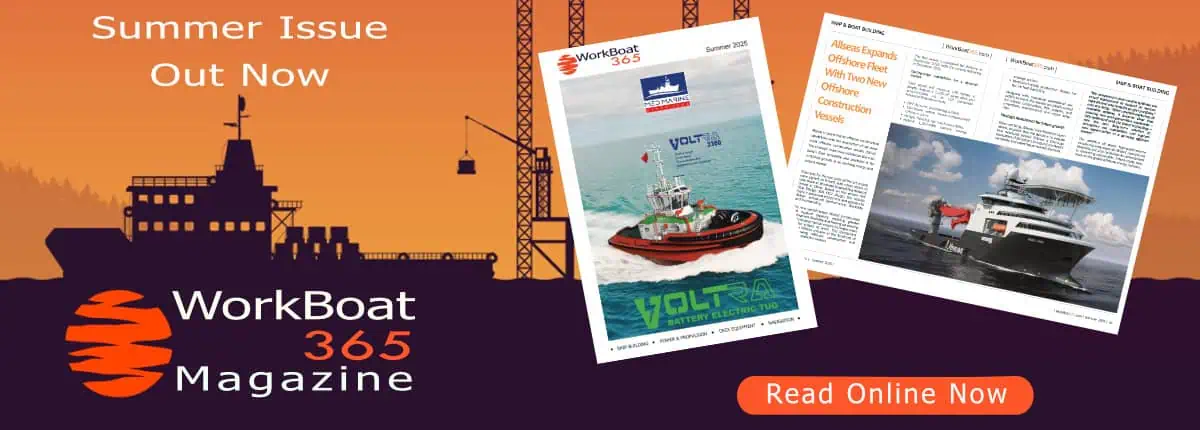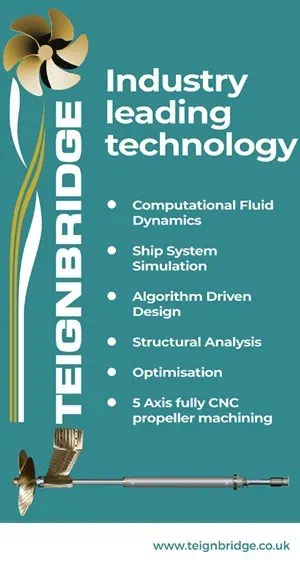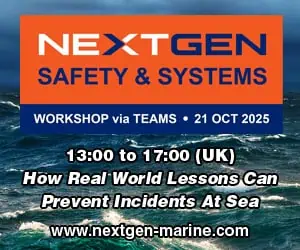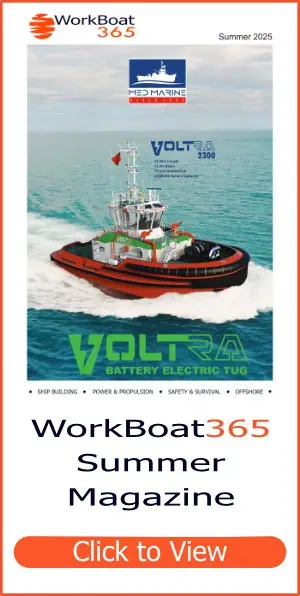Vessev, a global leader in sustainable marine technology, has revealed the VS—9 electric hydrofoiling vessel which will unlock entirely new opportunities for premium passenger transport on the water.
NetZero Maritime, Fullers360’s specialist maritime green technology and innovation team, has played a pivotal role in the adoption of this new type of vessel.
Designed and built by Vessev (formerly Seachange) the VS—9 delivers smooth and quiet travel on the water like never before. The state-of-the-art vessel is currently undergoing sea trials out of Auckland, New Zealand, and the first VS—9 will be certified this year, entering commercial operation with Fullers360 thereafter.
The nine-meter VS—9 will transport up to 10 passengers at a service speed of 25 knots providing an experience that is more like flying than sailing The VS—9 has a range of 50 nautical miles (57 miles/92.6km) thanks to state-of-the-art efficient hydrofoiling technology.
Eric Laakmann, Vessev CEO, said: “We are in the earliest stage of a global transition to sustainable energy use. Our partnership with NetZero Maritime is one of the most powerful in the world in accelerating the adoption of new technologies. There are 33 million vessels in the world today with sustainable vessels representing the smallest fraction. Through significant enhancements in efficiency, hydrofoiling will play a key role in this once-in-a-generation shift”.
Vessev’s expert team of marine engineers and boat builders, combined with Fullers360’s NetZero Maritime decarbonization team, has ensured the VS—9 is designed and built to align seamlessly with commercial and tourism transport requirements.
“Our partnership integrates New Zealand’s largest ferry transport and tourism operator with one of the country’s foremost sustainable marine technology providers. At Vessev, our ethos of ‘engineered for safety’, ‘built to last’ and ‘impact through performance’ is vital, and that’s exactly what the VS—9 delivers”, added Laakmann.
The VS—9 will unlock new opportunities on the water that haven’t been possible until now.
Laakmann commented: “Traditionally, larger vessels are required to deliver a comfortable passenger experience as they can handle the impact of waves and wake. By flying above the waves the VS—9 delivers a large vessel experience on an agile platform that can be berthed and charged in nearly any marina.
The development and commercialisation of the VS—9 unlocks entirely new possibilities on the water enabling a shift toward more efficient, more reliable and more comfortable marine transport. The VS—9 will enable thousands of new routes around the world that are currently impractical for traditional vessel.
The costs of maintaining and fuelling commercial fossil fuel vessels is quite substantial. We expect that in almost any commercial application, the lifetime cost of ownership of these vessels will be substantially less than comparable fossil fuel vessels. That is not including any additional revenue for operators which may come from operating vessels that deliver the best possible passenger experiences”.
Laakmann further commented: “The benefits of the VS—9 scale up to larger vessels. We are already working to develop the VS—18, a 100-passenger vessel using the same technology and design of the VS—9, which will have additional seakeeping capability and unlock even more opportunities”.
The VS—9 features ultra-high authority hydrofoil systems, where the foils change shape using high precision flaps under the water to optimize efficiency. This enables the VS—9 to handle adverse weather and provide far better seakeeping than other technologies. Vessev’s engineers used some of the same techniques employed by winning America’s Cup teams to make its systems ultra-efficient and resilient.
“To our knowledge, the VS—9 will be the only certified passenger electric hydrofoiling vessel to utilise this technology. We use techniques similar to America’s Cup vessels which provide very high control authority when compared to other systems. That means we can handle more wind and bigger seas. The system is more difficult to engineer up-front, but results in a very performant vessel that is both more capable and more efficient.” Says Laakmann.
“The VS—9 is so efficient that we are able to use very safe and longer lasting battery technologies when compared to other vessels of this type”.
Vessev’s technology reduces energy consumption by up to 95%, facilitating a range of up to 50 nautical miles at a service speed of 25 knots and significantly reduced operational costs. The energy efficiencies deliver much faster charging, more range and energy cost savings already evident after just two weeks of sea-trials.
“To put it into perspective, the VS—9 is undergoing on-water testing with a petrol-powered chase boat following, doing the same motions and distance. At the end of each day, the cost of the petrol fueling the chase boat is 25 times the cost of the electricity used to charge the VS—9”, explains Laakmann”.
Fullers360 CEO Mike Horne says the business is thrilled to partner with Vessev as part of its transition to zero emission solutions.
Mike Horne, Fullers360 CEO, commented: “It’s our intention for Fullers360 to be 100% electric or hydrogen operated by 2040 and foiling is absolutely a part of that vision for us. The establishment of NetZero Maritime has enabled us to dedicate a team to enabling zero emissions projects with the VS—9 being the first fully electric passenger vessel to operate in Auckland.
He continued; “Auckland is quickly becoming a case study for the adoption of green technology and the IP within NetZero Maritime is playing a fundamental role in accelerating the understanding and adoption globally. Seeing this project come to fruition reinforces our move to establish NetZero Maritime to enable the commercialization of new technology such as the VS—9”.
“The VS-9 combines the first fully electric passenger vessel to operate in Auckland with the latest hydrofoiling technology to deliver premium tourism experiences. Our understanding is there are currently no electric hydrofoiling vessels certified for commercial tourism use in the world and the testing done here in New Zealand will set a new standard for bringing this new class of vessel into service globally”.
The VS—9’s foils enable it to ride completely above the waves, providing an infinitely smoother passenger experience than conventional vessels and enhancing its operational capability. The VS—9 takes off at 18-19 knots, transitioning from foil assist to full foiling mode, and cruises with optimum efficiency between 22-25 knots. The foil stabilization systems enter operation at 12 knots – actively reducing pitch and roll motion, even when not fully on foils and ‘flying’.
Constructed using carbon fibre laminates, the VS—9 is incredibly resilient and built to last. For maximum durability, the VS—9’s foils are fully retractable which enables the vessel to operate in shallow water and protect the foils so the vessel can be transported on a trailer.
“The ability to remove the foils from the water completely is a design element we’re particularly proud of. We were told it would be impractical, but we’ve delivered a system which makes it easy for operators to maintain pristine foils for maximum efficiency. To our knowledge, the VS—9 will be the only certified passenger electric hydrofoil in the world capable of this”, says Laakmann.
The VS—9 is so efficient it can be charged using existing electric charging infrastructure commonly available in most marinas, accelerating the speed to service. Once highspeed DC charging is in place, recharge times will be up to 0.8 nautical miles of range per minute of charging.
Laakmann said, “Our objective is to break down the barriers to adopting electric vessels. From the outset, our goal was to design a commercial electric vessel that can use the charging capacity already available in many marinas to run serious commercial businesses. Through a combination of size and efficiency, we have succeeded with the VS—9. During sea-trials we have been running up to three test sessions a day using a standard AC 3-phase connection. We think that operators and tourism businesses around the world will see the benefit in that.”
With seating for ten passengers, the VS—9 will deliver premium experiences and completely transform how people travel on the water. Vessev’s hydrofoilling technology enables the vessel to glide above waves at 25 knots providing an experience more similar to travelling in a quiet airplane to deliver previously undreamt-of premium tourism experiences.
“Customers will glide across the Hauraki Gulf enjoying smooth travel that feels more like flying than sailing thanks to the foils that slice through waves usually uncomfortable for a vessel of this size to operate in. This means that rolling sensation you feel on traditional boats just disappears when the VS—9 enters foiling mode, creating an onboard experience unmatched by conventional vessels,” explained Horne.
Utilizing the design of the VS—9, Vessev is already working through further enhancements to the vessel performance and applying this to larger foiling vessels with capacity for more passengers suitable for a range of routes.
“We eagerly anticipate our continued partnership with Vessev to deliver zero-emission foiling vessels, cementing Auckland’s position as a global leader in innovation and sustainability,” concluded Horne.
“We are honored by our partnership with Fullers360. They are one of the most innovative operators in the world and are leading the way in genuine decarbonization of marine transport. We thank both Fullers360 and NetZero Maritime for their support and their vision” finished Laakmann.
The VS—9 entered the water for the first time earlier this month at Auckland’s Westhaven Marina where it is undergoing robust sea trials and risk mitigation testing before gaining certification by Maritime New Zealand. The VS—9 is on track to be the first vessel of its kind in the world to be certified for commercial use.
Intended for premium tourism services the VS—9 signifies a defining moment in Auckland’s decarbonization journey as the city welcomes its first fully electric passenger vessel.



